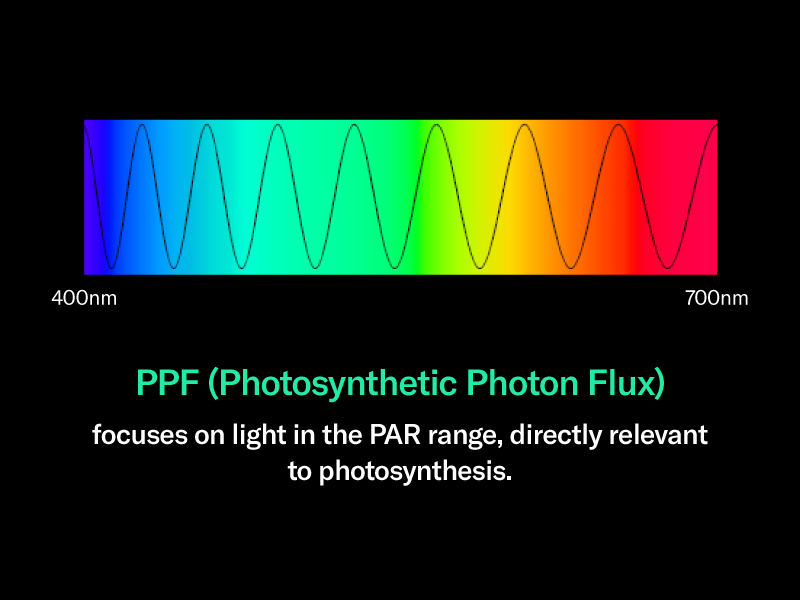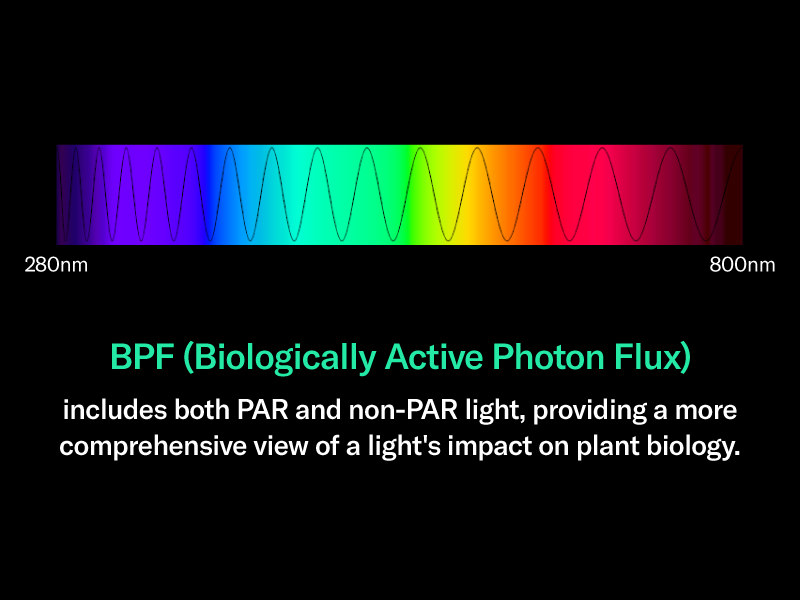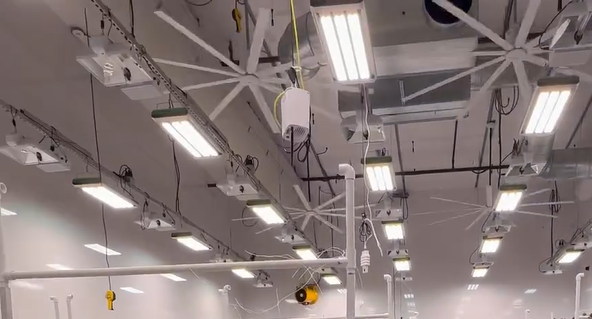Introduction
Lighting plays a crucial role in plant growth, but not all lighting metrics are created equal. Growers often hear about PPF (Photosynthetic Photon Flux) as a key measure of light output, but BPF (Biologically Photonic Flux) is gaining attention as a more precise way to gauge how plants respond to light. But what’s the real difference? Which metric should you prioritize for better yields? Let’s break it down.
1. What Are Lighting Metrics and Why Do They Matter?
Before diving into BPF vs. PPF, it’s important to understand why these metrics matter. Light isn’t just about brightness—it’s about delivering the right spectrum and intensity to optimize plant growth. The right lighting can mean the difference between a thriving canopy and a disappointing yield.
2. Understanding PPF (Photosynthetic Photon Flux)
2.1 Definition of PPF
PPF measures the total amount of photosynthetically active photons emitted by a light source per second. It’s expressed in micromoles per second (µmol/s) and tells you how much usable light your fixture produces.

2.2 How PPF is Measured
PPF is measured with specialized equipment like integrating spheres and quantum sensors, which detect the total output of 400-700nm wavelengths—the range of light that drives photosynthesis.
2.3 Why PPF Matters for Growers
PPF is a key metric because it helps determine how much light your plants receive. Higher PPF values generally indicate more available energy for photosynthesis, leading to faster growth and higher yields—assuming other environmental conditions are optimal.
3. Understanding BPF (Biologically Photonic Flux)
3.1 What is BPF?
BPF is a newer concept that measures how effectively the emitted photons influence plant biology, not just how many photons exist. It accounts for specific spectral efficiencies and their impact on plant responses beyond photosynthesis, such as flowering, secondary metabolite production, and plant morphology.

3.2 How BPF Differs from PPF
- PPF measures the total amount of photons in the 400-700nm range.
- BPF accounts for how well those photons stimulate biological processes in plants, including the influence of far-red and UV light.
3.3 BPF’s Role in Crop Steering
BPF allows growers to fine-tune spectral output for different growth stages. For example, increasing Far Red (FR) and Deep Red light can accelerate flowering, while optimizing blue light can improve plant structure and prevent stretching.
4. BPF vs. PPF – Which One Should You Focus On?
4.1 When to Prioritize PPF
- If you need high-intensity light, such as in commercial cultivation
- When your goal is maximum photosynthesis
- In large-scale grows where spectral fine-tuning isn’t a priority
4.2 When BPF Becomes Crucial
- When optimizing light for specific plant responses (e.g., higher terpene production)
- If you’re using spectrum-tunable LED grow lights
- When focusing on crop steering strategies to manipulate growth phases
5. The Evolution of Grow Lighting Technology
With the rise of spectrum tunable LED grow lights, BPF has become more important. Older HPS fixtures mainly relied on PPF, but modern LED systems allow growers to customize the spectrum for better plant responses.

6. Choosing the Right Grow Lights Based on These Metrics
6.1 LED vs. HPS – Which One Aligns Better with PPF and BPF?
- HPS lights have high PPF but limited spectrum control.
- LED grow lights can provide high PPF with customizable BPF, making them more efficient.
6.2 Best Lights for Maximum Efficiency
Growers who want maximum efficiency should look for lights with high PPF and adjustable BPF, allowing for custom light recipes that cater to specific plant needs.
7. Common Misconceptions About BPF and PPF
- Myth: Higher PPF always means better yields. (False—BPF influences quality, not just quantity.)
- Myth: PPF alone determines light efficiency. (False—BPF accounts for how plants respond to light.)
Conclusion
While PPF is a great measure of total light output, BPF is revolutionizing how we approach grow lighting. Growers should aim to balance both metrics, especially with modern LED technology that allows full control of the light spectrum.
